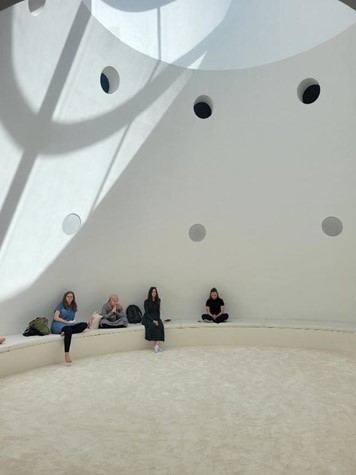Museums were and are never neutral places. They are subjective spaces, which often tend to be frozen in time or stained by time. The objects and the intangible heritage they are preserving, manifest omnipresent knowledge and stories that are often not visible to the naked eye but are affecting us when entering a museum space or depot, especially in those collections that are saturated in historical violence. These feelings and perceptions of the absent history live on in our narratives/insights, which haunt us in an unspoken way. They are generated by (collective) memory, which has a constant influence on the present and also on future decisions.
The ‘ghosts’ of the past could encompass collective histories for example of violence and exclusion, extinct lifeforms as well as personal narratives and histories e.g. of trauma. Museum depots are most likely to be frozen in time and tend to store those stories.
